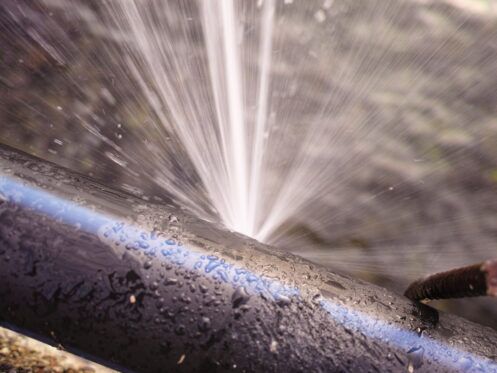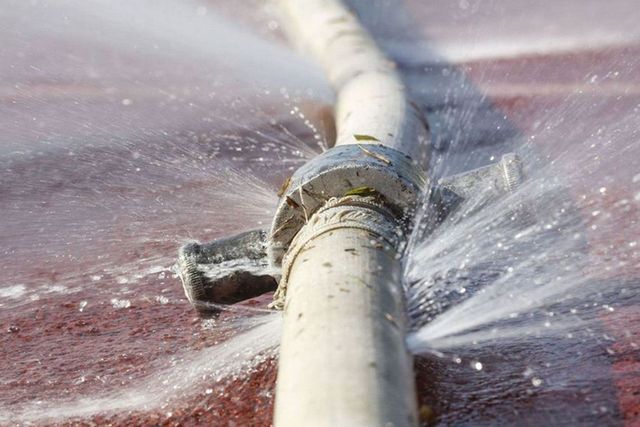Avoiding Ruptured Pipeline: Necessary Tips to Safeguard Your Pipes
Avoiding ruptured pipes is an important concern for home owners, specifically during colder months when the danger of cold is heightened. Implementing strategic measures such as proper insulation, routine evaluations, and keeping regular interior temperature levels can significantly minimize the chance of pipeline failure. In addition, recognizing emergency procedures equips home owners to react promptly to possible plumbing issues. However, many are unaware of the particular vulnerabilities that their pipes might encounter. Exploring these vulnerabilities can give very useful understandings into guarding your plumbing system successfully.
Understand Pipeline Vulnerabilities
Understanding pipe susceptabilities is essential for efficient plumbing upkeep and avoiding expensive damages. Several elements add to the sensitivity of pipelines to bursts, consisting of material composition, age, and environmental problems. Older pipelines, particularly those made from galvanized steel or polybutylene, commonly weaken with time, bring about enhanced danger of ruptures and leaks.
Temperature variations can likewise substantially effect pipe stability. In chillier environments, water caught in pipelines can ice up, broadening and exerting stress on the pipeline walls, which might ultimately bring about a burst. Moreover, high water stress can strain pipelines, especially at bends and joints, enhancing the chance of failing.

Insulate Piping Effectively
Correct insulation of pipes is critical for avoiding cold and succeeding ruptureds during cold weather (burst pipe). Insulating your plumbing system efficiently safeguards versus temperature drops that can lead to expensive damage. Begin by determining at risk areas where pipes are exposed to outdoor temperature levels, such as basements, attics, and exterior walls
Use foam pipe insulation sleeves or wrap insulation tape around these locations to give a protective barrier. Ensure that all sections of the pipelines, especially those with limited warm direct exposure, obtain ample insulation. Pay special focus to joints and installations, as these are extra vulnerable to freezing.
When insulating, it's necessary to choose products that satisfy regional structure codes and are ideal for the specific setting. For example, fiberglass insulation is usually recommended for its thermal resistance residential or commercial properties - burst pipe. In addition, think about using heat wires or tape in extreme problems, which can be connected in to provide supplemental heat
Consistently inspect shielded pipelines for any kind of indications of wear or damage, as jeopardized insulation can lessen its efficiency. By taking these aggressive procedures, you dramatically minimize the threat of pipeline ruptureds, guaranteeing a reliable plumbing system throughout the winter season months.
Maintain Consistent Temperature Level
A stable indoor temperature level is crucial for preventing ruptured pipes throughout the cold months. When temperatures decline, water within pipes can freeze, broadening and producing stress that may inevitably create the pipelines to ruptured.Using a programmable thermostat can assist manage indoor temperature levels successfully, making sure that areas with pipes remain cozy also when the home is empty.
This small flow of water can stop cold by minimizing stress within the pipelines. By executing these methods, property owners can substantially lower the threat of pipeline ruptureds and protect their pipes systems versus the rough winter season aspects.
Frequently Check Plumbing
Routine examinations of pipes systems are crucial for avoiding burst pipelines and keeping total home honesty. Regular checks allow house owners to recognize possible concerns before they rise right into expensive repair services or significant water damages. Throughout these examinations, it is necessary to analyze visible pipes for indications of corrosion, leaks, or wear. Pay unique attention to locations vulnerable to cold, such as basements, attics, and exterior walls.
Furthermore, examining links and joints is crucial, as these points are frequently susceptible to leakages. Property owners should also evaluate water pressure degrees, as excessive pressure can strain the pipes system and raise the threat of pipeline ruptureds.
Consider organizing professional plumbing evaluations at the very least as soon as a year, especially prior to winter months, to ensure your system is prepared for cooler temperature levels. By being positive in your method, you can guard your home against the pricey and disruptive repercussions of burst pipelines.
Know Emergency Situation Treatments
Comprehending emergency treatments is important for every house owner, particularly after performing routine plumbing inspections. Being prepared for a pipes emergency situation can considerably reduce damages and conserve prices.
Following, keep essential tools handy. A plumbing emergency package ought to include a wrench, bettor, and towels, in addition to a flashlight and a pail for tiny leaks. In addition, think about having the contact info for a relied on plumbing easily available, must the scenario rise past internet your control.
If you find a leak or burst pipe, promptly shut off the water supply and notify your plumber. Record the damage with photos for insurance objectives. Know the signs of possible plumbing problems, such as uncommon water stress fluctuations or damp spots on walls
Ultimately, aggressive understanding and quick action are crucial in managing plumbing check that emergency situations, ensuring your home remains secured and reducing prospective damage.

Verdict
To conclude, stopping burst pipes demands a multifaceted approach that consists of understanding pipeline vulnerabilities, correct insulation, maintaining regular interior temperature levels, routine inspections, and knowledge of emergency treatments. By implementing these essential strategies, the threat of pipes failings can be substantially reduced, therefore making certain the longevity and effectiveness of the plumbing system. Positive measures not just protect versus potential damages however also contribute to overall water preservation and the protection of building.
In chillier environments, water caught in pipelines can freeze, exerting and increasing pressure on the pipe wall surfaces, which may ultimately lead to a ruptured. When temperature levels decrease, water within pipelines can her response ice up, producing and increasing pressure that might ultimately trigger the pipelines to burst. By executing these methods, property owners can dramatically decrease the danger of pipeline bursts and guard their plumbing systems against the severe wintertime aspects.
